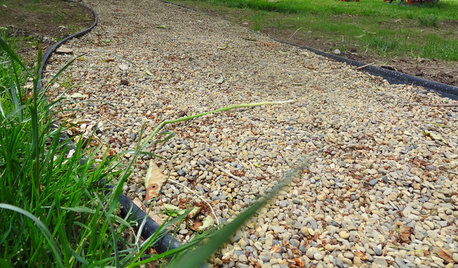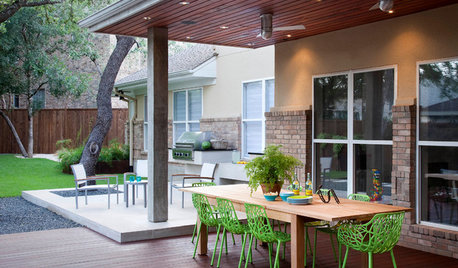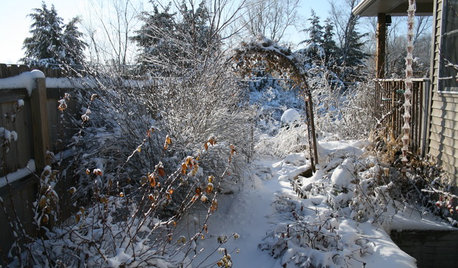Bagged black earth...a scam ?
andre_7
14 years ago
Featured Answer
Comments (40)
swanz
14 years agobpgreen
14 years agoRelated Discussions
how to grow black rose from seeds
Comments (23)I am from India as well read some of the comments above, I have brought some roses from china which said black and white roses and rainbow roses, I know they are completely fake but the best thing is that even if a single rose grows from those seeds it will be a great success for me. Yes they are rose seeds as I can distinguish from their shape and size. They do need some cold period in fridge I have kept them in moist soil for 3 weeks nothing happened so I am now keeping them in fridge red white, orange whatever color they end up in I will be happy to accept....See MoreBirds wasting the milo in my bird feeders
Comments (17)I have found 9-pound bags of a mix of mostly millet with some sunflower seed and, I think, safflower seed, at a dollar-type store here called Big Lots. $7 per bag. Birds gobble it up in winter, but in the winter they'll eat anything; in the spring they are picky, kicking out the milo for the pigeons and doves, so I stop feeding them and concentrate on hummingbirds and, this year, suet for Ladderback and Downy woodpeckers. Also I have nyger thistle feeders (both metal mesh feeder and sock feeder) out for our sweet, tiny lesser goldfinches. To complete my first post in this forum, I spotted and got pictures of a male Northern Cardinal this morning, a rare sighting for our area (Albuquerque). A similar male bird (the same one??) was reported a few miles further north back in February. I also photographed a rare Vermillion Flycatcher in April. Maybe more birds are moving into my state -- and I'll have figure out how to feed them if they visit my apartment complex :)...See MoreWhy would I buy 50% filler bags of grass seed?!
Comments (5)I've noticed that the areas where I applied Scotts Turf Builder coated seed (a) are the best looking parts of my lawn, and (b) I haven't had to return to those areas to put more seed. The areas I've applied untreated seed, such as Titan RX or Black Beauty, required me to do a second seeding that I didn't have to do with Scotts. It's important to note that I had to do the same thing when using Pennington's coated seed. From my basic, real life experiences: Scotts Turf Builder seed produced the best portions of my lawn and was also the best value because I didn't need to reseed those areas. Penningtons coated seed is probably a ripoff, though....See MoreSpin out bags?
Comments (19)The bags I have definitely allow water to pass out from the bottom of the bag. They are plastic, but the fabric is permeable. Whether or not the bottom of the bag would actually wick water upward from the ground sounds dubious. The seller made no such claims for the product. Her selling point was that the bags would inhibit the outward growth of roots in a self-pruning manner, making them good for growing vegetables in an area of limited space. This feature had no particular attraction for me, given the kind of rural gardening I do, and I more-or-less negated the properties of the sides of the bags by spray painting them in tones of rust and of green because I disliked the original black color. I purposefully left the bottoms of the bags unpainted however, and these bags leak water out the bottom as fast as you can fill the bags with water, so drainage is guaranteed when watering I'm just curious, are some people actually burying these bags in the ground (under trees)? Is that the point of discussions about the bags' ability to wick moisture? Myself I use some of these bags for planting, above ground, on porches, patios, etc. Right now I have radishes growing in one, and tomato plants in another, on my porch. I re-purpose unused grow bags as tote bags for hauling things out to the gardens....See MoreKimmsr
14 years agoandre_7
14 years agoswanz
14 years agodigdirt2
14 years agobpgreen
14 years agodigdirt2
14 years agoandre_7
14 years agobpgreen
14 years agoandre_7
14 years agobpgreen
14 years agonygardener
14 years agoandre_z
14 years agonygardener
14 years agorj_hythloday
14 years agoandre_z
14 years agotoogreen
14 years agotoxcrusadr
14 years agoandre_z
14 years agoandre_z
14 years agogarius
14 years agohamiltongardener
14 years agodaleyc
12 years agoangelyne
9 years agoclaireplymouth z6b coastal MA
9 years agotoxcrusadr
9 years agoyugoslava
9 years agoirenka_hunter
7 years agokimmq
7 years agotoxcrusadr
7 years agoirenka_hunter
7 years agolast modified: 7 years agokimmq
7 years agotoxcrusadr
7 years agorgreen48
7 years agoirenka_hunter
7 years agoAbid Raza Toronto Canada
5 years agoyugoslava
4 years agoarmoured
4 years ago
Related Stories

EARTH DAY5 Ideas for a More Earth-Friendly Garden
Consider increasing the size of garden beds, filtering rainwater and using plants to reduce energy use
Full Story
CLOSETSBuild a Better Bedroom: Inspiring Walk-in Closets
Make dressing a pleasure instead of a chore with a beautiful, organized space for your clothes, shoes and bags
Full Story
MOST POPULAREasy Green: 23 Ways to Reduce Waste at Home
Pick from this plethora of earth-friendly ideas to send less to the landfill and keep more money in your pocket
Full Story
COLOR9 Dark Wall Colors to Suit Your Mood
Tired of light and airy? Try dark and moody for a change; you may be surprised by the moods these colors inspire
Full Story
Love Travel? Let Your Interior Take Wing
Vintage airline posters, model biplanes and propellors add adventure to a space
Full Story
GARDENING AND LANDSCAPINGDIY Pathway Puts Landscapes on the Right Track
Create a road more traveled in your backyard, and save your lawn from foot traffic, with this easy, affordable gravel path
Full Story
BATHROOM DESIGNSpotted: Refrigerators in the Bathroom
You read that right. Before you protest, here are seven good reasons why people are chilling in the bath
Full Story
GARDENING GUIDESGet on a Composting Kick (Hello, Free Fertilizer!)
Quit shelling out for pricey substitutes that aren’t even as good. Here’s how to give your soil the best while lightening your trash load
Full Story
MONTHLY HOME CHECKLISTSYour April Checklist for a Smooth-Running Home
Shake off the winter blues and spring into action to get your home in the spirit of the new season
Full Story
LIFE6 Ways to Beat the Winter Blahs
Snow and dark days dampening your spirits? These ideas will have you looking on the bright side
Full Story


eeny meeny